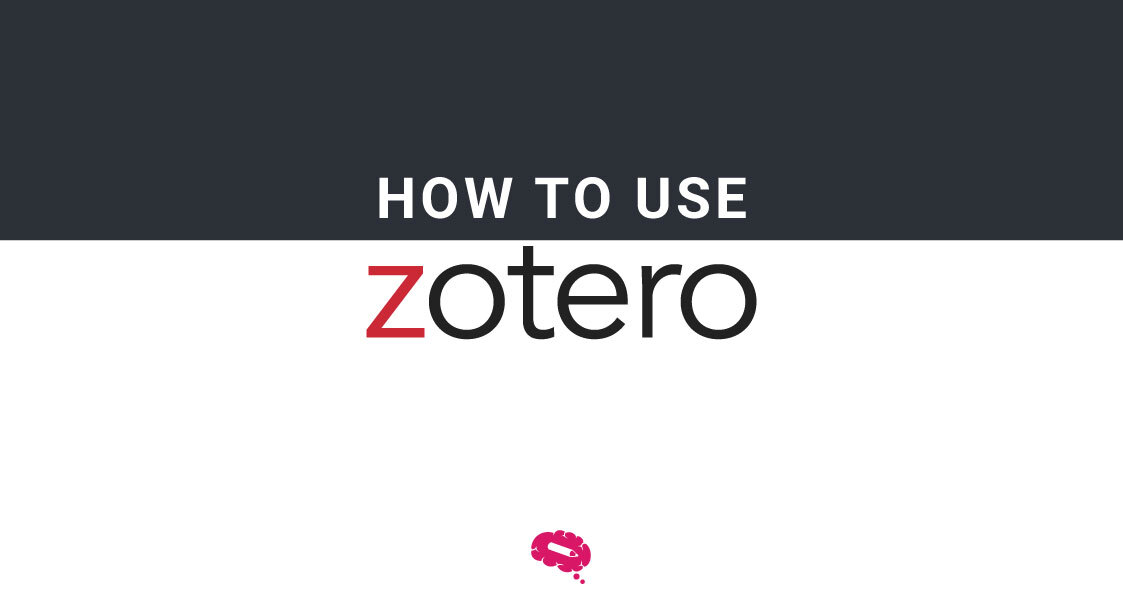Zotero is a free, open-source reference management software that helps researchers collect, organize, cite, and share their research sources. In this article, we tell you how to use Zotero, how it works, and help you to set up an account, create groups, and set preferences to optimize the workflow.
What is Zotero?
Zotero is a free, open-source reference management software that allows users to easily save references from various sources, including websites, databases, and library catalogs, and automatically generate citations and bibliographies in various citation styles.
Zotero also offers note-taking, tagging, and file management features to support research workflow. Additionally, it provides social and collaborative features that enable users to share their collections and collaborate on research projects.
Setting Up a Zotero Account
To set up a Zotero account, follow these five steps:
1. Go to the Zotero website and click on the “Register” button in the top-right corner of the homepage.
2. Fill in the required information, including your name, email address, and password of your choice. You will also need to agree to the terms of service and privacy policy.
3. Once you have filled in the registration form, click on the “Register” button at the bottom of the page. You will receive an email confirmation that includes a verification link.
4. Click on the link to verify your account and complete the registration process. After completing the registration process, you will reach your Zotero account dashboard.
5. Download and install Zotero for your device and browser. Log in to your account using the same email address and password previously registered.
Using Zotero Groups
Click on the “Groups” tab in the top navigation bar, then click on the “Create Group” button at the top-right of the page. Select the type of group you want to create. Keep in mind that public groups are visible and open to anyone, while private groups are restricted to invited members, administrators, and editors.
Next, fill in the required information, including the group name, description, privacy settings, and tags to help categorize it. To manage group settings, click on the “Settings” button in the top-right corner of the group page.
Setting Preferences/ Associating PDFs/ Citation Format
Now that you already know how to use Zotero, let’s learn how to set some preferences. Click on the gear icon in the top-right corner of the Zotero panel, and on “Preferences” in the drop-down menu.
Preferences
In the “General” tab, select options such as the default database, the default location for storing attachments, and the default language. In the “Export” tab, select the default citation style and choose the types of data to include in your citations.
Associating PDFs
To associate PDFs with Zotero items, click on the “Advanced” tab and choose the “Files and Folders” sub-tab. Select the “Use Zotero to organize my files” option, then click the “Associate PDFs with Zotero items” checkbox.
After choosing the proper folder to save your documents, Zotero will automatically link the PDFs to the corresponding items in its library.
Citation format
To set a citation format for a specific item, right-click on the item and choose “Create Bibliography from Item” from the drop-down menu. Zotero will generate a formatted bibliography in seconds.
Using Zotero with Google Docs
If you want to use the two apps together, search for a free add-on named “Zotero Connector for Google Docs” in the Google Workspace Marketplace. Once you have installed it, follow these steps:
1. Open your Google Docs document and click on the Zotero icon in the toolbar to open its sidebar.
2. Select the references you want to add to your document by clicking on them in the Zotero sidebar.
3. Click the “Insert Bibliography” button in the Zotero sidebar to add the formatted bibliography to your document.
4. If you want to add a citation, place your cursor in the desired location in the Google Docs document and click the “Add/Edit Citation” button in the Zotero sidebar.
5. Enter the author or title of the reference in the search box, and select the reference you want to cite from the results.
6. You can also add page numbers, suppress author names, and format the citation using the drop-down menus in the “Add Citation” dialog box.
Once you have added the citation, Zotero will automatically update the bibliography in your document to include the new citation.
Finding and downloading full-text PDFs
By following these steps, you can allow Zotero to automatically find and download full-text articles for all the items added to your library.
1. Open Zotero and click on the gear icon in the top-right corner of the Zotero pane.
2. Click on “Preferences” in the drop-down menu.
3. Go to the “Advanced” tab and choose the “General” sub-tab.
4. Check the box next to “Automatically attach associated PDFs and other files when saving items.”
5. Also, check the box next to “Automatically find and attach PDFs and other files when importing.”
6. Click on the “OK” button to save the changes.
Zotero may not find a full-text PDF automatically. Then you will have to:
- manually search for the PDF by clicking on the “Find PDF” button in the item details pane;
- Set up a proxy server in Zotero to access full-text articles that are behind a paywall.
Preferences: Proxies
By setting up proxies in Zotero, you can access resources that might not be available openly on the internet, such as articles or subscribed databases. This can be especially useful when you are conducting research and need access to a wide range of information. Zotero will automatically access full-text articles when available.
Collecting References with Zotero
Create a new library and determine the source of the reference you want to add. Zotero can collect references from many different sources, including online databases, library catalogs, and web pages.
Use the Zotero Connector to add selected references to your library. Alternatively, you can manually add references by selecting the type of item you want to add (e.g. book, journal article, and website).
Managing References & Folders
You can easily manage your references and folders in Zotero.
- To create a new folder or a parent folder, right-click on the library, and select “New Collection”. Give the folder a name, and drag and drop the references you want to include.
- To move references to a different folder, simply drag and drop them into the desired folder.
- To search for specific references, use the search bar at the top of the Zotero pane.
- To group related references together, regardless of their location in your library, use tags. You can also add and manage tags in the “Tags” pane.
- To insert references into your document or to create bibliographies, click on the “Cite” button in the Zotero toolbar or use the keyboard shortcut Ctrl+Alt+A (or Cmd+Opt+A for Mac). Choose your citation style and insert your references or bibliography.
- To keep your Zotero library up to date across multiple devices use the “Sync” button in the Zotero toolbar or use the keyboard shortcut Ctrl+Shift+S (or Cmd+Shift+S for Mac).
Over 75,000 accurate scientific figures to boost your impact
Mind the Graph is a platform that offers a wide range of templates and tools to help researchers create professional and custom designs for their scientific publications. The platform provides a user-friendly interface that allows users to create high-quality scientific graphics without the need for design skills. The platform also provides a vast library of scientific illustrations that are scientifically accurate and visually appealing.


Subscribe to our newsletter
Exclusive high quality content about effective visual
communication in science.




